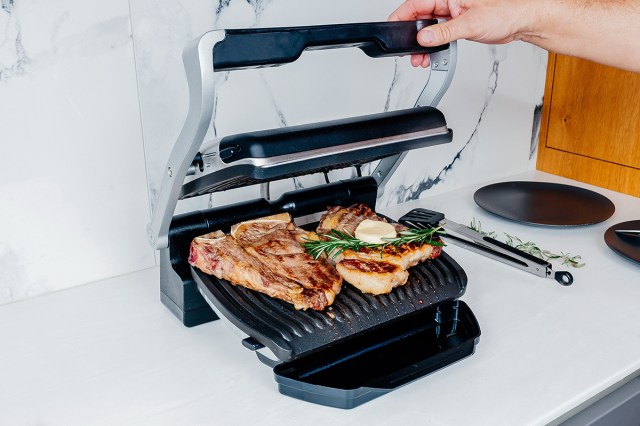All featured products and deals are selected independently and objectively by the author. Better Report may receive a share of sales via affiliate links in content.
The fact that a world champion boxer is best known for a countertop grill is a remarkable feat. In the late ‘90s and early aughts, you couldn’t step into a kitchen without spotting a pearly white George Foreman Lean Mean Fat-Reducing Grilling Machine on the counter. The once-ubiquitous device became famous thanks to its convenience and ability to drain fat from the patties you cooked on its slanted surface in mere minutes. It was simple and effective — and still is. Though the heyday of the grill has long since passed, it’s still an affordable and versatile piece of cooking equipment for your kitchen. Here’s why.
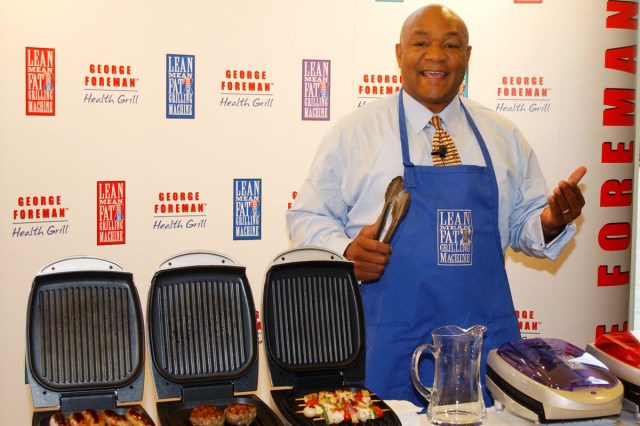
The History of the Grill
To answer your question, no, George Foreman did not invent the Lean Mean Fat-Reducing Grilling Machine. We can only dream. Michael Boehm, an inventor from Illinois, conceived the device to cook both sides of a piece of meat and remove fat in the process. Originally dubbed “The Fajita Express”— a wonderful name in its own right — the product was supposedly pitched to another athlete first: Hulk Hogan. The Hulkster and his 24-inch pythons declined the opportunity if the story is to be believed. After shopping the grill around, Salton, Inc., the company that produced the grill, sent a prototype to Foreman’s people. And the rest, as they say, is history.
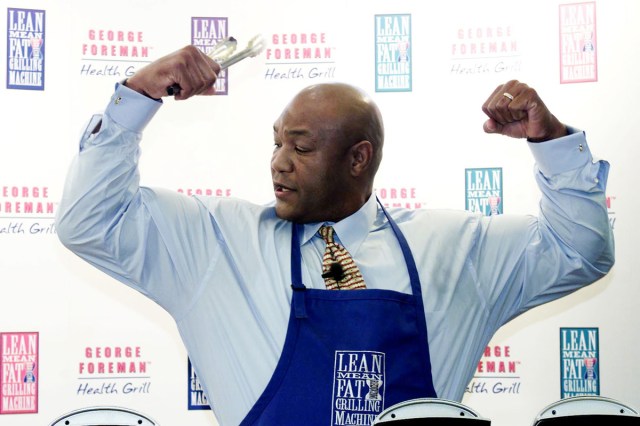
The Grill’s Legacy
In the 15 years after its release in 1994, the George Foreman Grill sold more than 100 million units, skyrocketing to success and giving plenty of hungry customers a reasonable way to grill burgers and dogs during the winter months and when time was of the essence. At the height of its popularity, the grill padded Foreman’s pockets to the tune of $4.5 million per month, easily eclipsing his boxing purses. Part of the grill’s appeal was its ease of use. You simply plugged it in, popped on a few patties, and waited less than five minutes for them to finish cooking. Coming of age during a time of prepackaged snacks and dinners made the device a powerful tool for busy parents and college kids alike. And it was relatively inexpensive (less than $30). It’s hard to compete with cheap, easy, and healthy.

Why You Should Still Own a George Foreman Grill
It may surprise you that the George Foreman Grill is still in production. Not only that, but while the world moved on from the grill, Spectrum Brands, the current owner, kept quietly improving its range, introducing advanced options, outdoor grills, and higher-quality materials. The results are a variety of George Foreman Grills similar to the one you remember, but so much better.
Today’s grills come in various finishes, including an eye-catching red that will announce to all your guests that you’re back on the George Foreman train. The cooking surfaces are now dishwasher safe, so you no longer have to scrub away caked-on bits. There are also smokeless options if you use your grill near a sensitive smoke detector. Many options heat faster these days, too, offering up to 30% quicker preheat on some models, so you can plug them in and enjoy your meal even faster than you remember.
But at its core, this is the George Foreman Grill you know and love. Every option sears both sides of your food simultaneously. Almost all options retain the floating hinge, which allows for variable height, meaning you can squish paninis and accommodate thick chicken breasts and dense burgers. Many of the newer George Foreman Grills also offer more space, allowing you to handle dinner for a family of five in one go.
What I love about the George Foreman Grill remains — it’s a convenient and effective meal preparation. My wife and I both work, and evenings are when we head off to the gym, so plenty of days require simplicity when it comes to dinner — either that or we’re eating at 9:30 p.m., which is less than ideal and causes plenty of sleep issues. The George Foreman Grill remains the most versatile tool for navigating packed schedules. I regularly marinate thin chicken breasts and toss them on the grill to pair with some pan-roasted veggies. Some nights, I’ll toss on frozen shrimp or burgers. When I feel particularly spent, I turn to simple paninis and let the grill handle those. There’s even a George Foreman Grill cookbook from back in the day you can still buy if your imagination isn’t spitting out fresh ideas, and I’ve worked my way through more than half of the 100 recipes it includes. If that doesn’t suffice, plenty of home chefs have also penned cookbooks that revolve around the use of the grill, so extending yourself beyond burgers shouldn’t be an issue.
Reader Favorites
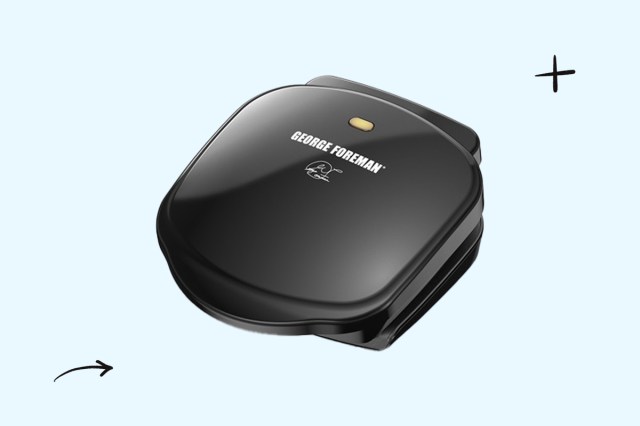
Want the closest modern George Foreman Grill to the one you remember from the ‘90s? Then, the GR10B is the model for you. This version gives you space for two patties, boasts a nonstick coating, and helps remove up to 42% of the fat in your burger. Without any added bells or whistles, the GR10B is just like the device you used to have, but now it comes in a sleek, all-black colorway. At less than $30, it remains a remarkably affordable kitchen appliance.
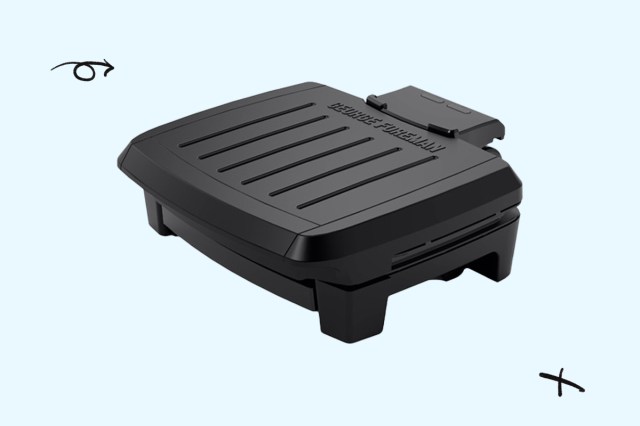
If you’re willing to shell out a bit more for added convenience, consider the George Foreman Fully Submersible Grill. As the name suggests, the entire grill is dishwasher safe, so clean-up is as simple as possible. At $52, the grill isn’t wildly more expensive than the GR10B, and the added durability, faster preheat, and larger size (you can fit up to four servings on the Fully Submersible Grill) make it the best value.
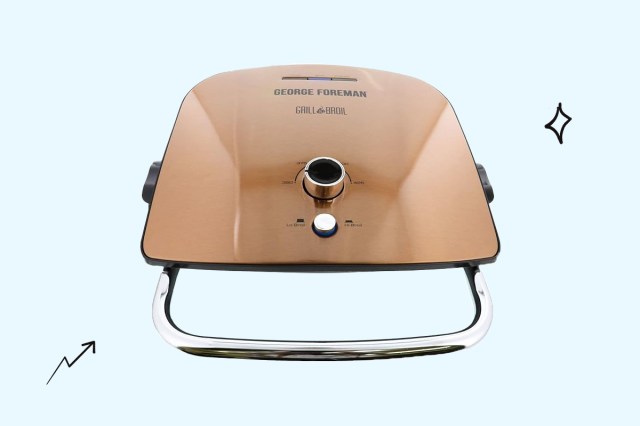
Want top-of-the-line? Consider the most advanced and premium option in the catalog: the GRBV5130CUX. This model has a broil function when the top cooking surface is removed to reveal an infrared heating unit. It comes in six colors and is the most eye-catching George Foreman Grill in the range. You can adjust the temperature to allow your George Foreman Grill to replace your toaster oven. It’s unlike the grills of yore, but it’s perfect for those looking for more versatility and power.
More From Our Network
Better Report is part of Inbox Studio, which publishes content that uplifts, informs, and inspires.
